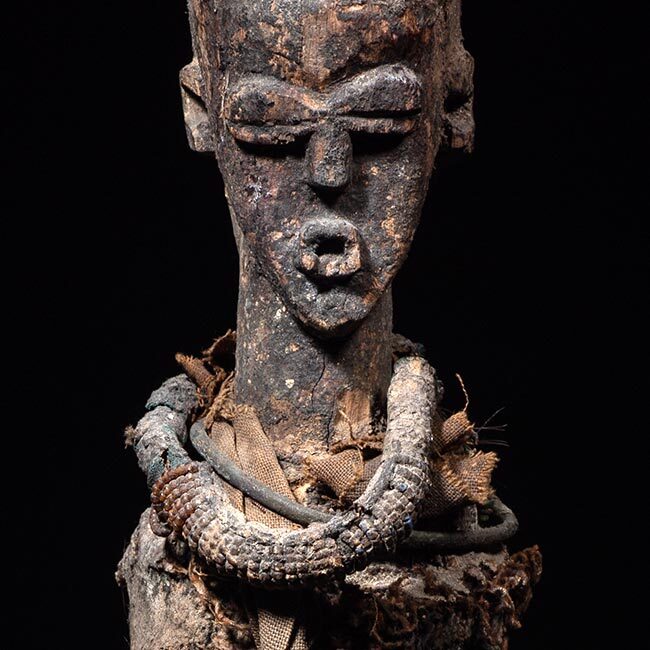Wooden Mask
Vokeo Island, Schouten Islands Group, Papua New Guinea
Early 20th c
Provenance: Grace Goldberg collection, Harrison, NY, acquired in 1970 from Bobbi Nochimson- Entwistle. By descent to family member
This example features a nose in the pointed form of a bird’s beak which enhances the elongated face and smiling expression of this mask. Foundational beliefs specify that ancestors can appear in many forms, including those of animals. The incorporation of birdlike elements in ancestral sculpture, as seen here, is characteristic of art from the Lower Sepik River region. When performed, this mask was a small part of a gigantic, full-body costume covered with feathers and shells. The masquerader appeared in the central gathering place of a village during initiation ceremonies for boys to achieve adult status. Occasionally, the mask would have been hung on the facade of a men’s ceremonial house to signal an important event or preparation for a ceremony. The surface of the mask is well worn and it has a heavily encrusted patina, indicating it was danced and stored for continued use over many decades.
Wooden Mask
Vokeo Island, Schouten Islands Group, Papua New Guinea
Early 20th c
Provenance: Grace Goldberg collection, Harrison, NY, acquired in 1970 from Bobbi Nochimson- Entwistle. By descent to family member
This example features a nose in the pointed form of a bird’s beak which enhances the elongated face and smiling expression of this mask. Foundational beliefs specify that ancestors can appear in many forms, including those of animals. The incorporation of birdlike elements in ancestral sculpture, as seen here, is characteristic of art from the Lower Sepik River region. When performed, this mask was a small part of a gigantic, full-body costume covered with feathers and shells. The masquerader appeared in the central gathering place of a village during initiation ceremonies for boys to achieve adult status. Occasionally, the mask would have been hung on the facade of a men’s ceremonial house to signal an important event or preparation for a ceremony. The surface of the mask is well worn and it has a heavily encrusted patina, indicating it was danced and stored for continued use over many decades.










